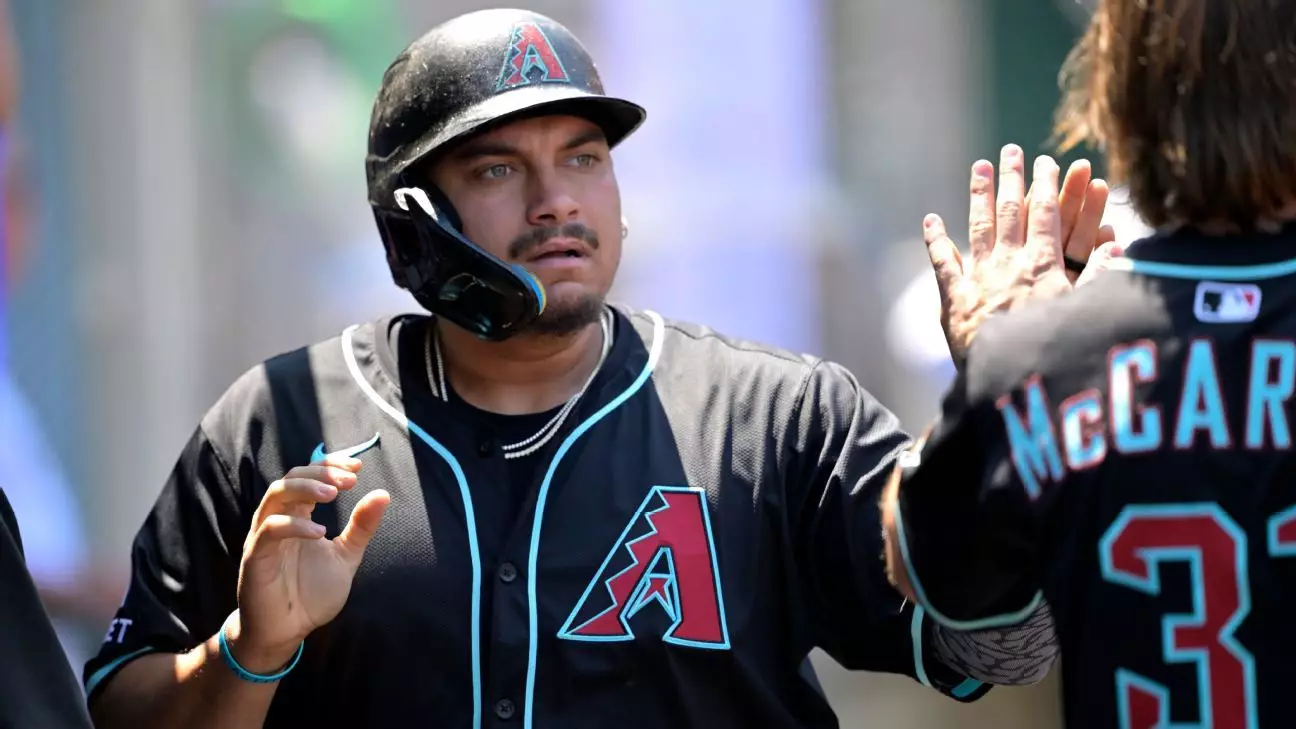In the high-stakes realm of Major League Baseball, strategic trades are often the defining moments for teams aiming to elevate their postseason aspirations. Seattle’s recent trade for Josh Naylor exemplifies a calculated effort to shake up their roster with a player poised for immediate impact. Naylor, a robust slugger known for his low strikeout rate and versatile offensive skills, represents more than just a statistical upgrade; he signifies a broader commitment to competitiveness. His acquisition underscores the Mariners’ willingness to make bold moves despite the risks, emphasizing that placing faith in proven talent can sometimes outweigh the allure of unexploited prospects.
Naylor’s past performance paints him as a reliable offensive contributor with a knack for hitting in key moments. His .292 batting average and solid slugging percentage this season demonstrate his ability to deliver consistent production. On a team like Seattle—endearingly resilient but often hampered by inconsistency—adding a player with his plate discipline suggests a plan to stabilize their offensive lineup for the final stretch of the season. Moreover, his history of playing at designated hitter offers strategic flexibility, allowing the Mariners to optimize their lineups based on opponent matchups and game situations.
Conversely, the deal’s structure reveals the Mariners’ pragmatic approach to prospect development. Sending away emerging talents like Brandyn Garcia and Ashton Izzi indicates a focus on short-term gains over future speculative value. While this move might invite criticism from those who champion organic development, it fits into a larger narrative of aggressive contention—it’s about grabbing opportunities now, rather than waiting for a slow-building rebuild. This willingness to make decisive trades reflects a deeper understanding that in baseball’s razor-thin margins, boldness can be a team’s most potent currency.
The Diamondbacks’ Window of Opportunity: Rebuilding with an Eye on the Present
Arizona’s strategy offers an intriguing counterpoint. Once a surprise contender en route to the World Series, the Diamondbacks now seem to be reconciling their championship ambitions with pragmatic roster adjustments. Their willingness to trade valuable players, including Naylor himself, signals a transition phase—an acknowledgment that their core might soon require retooling given impending free agency and injuries.
The players targeted by the Diamondbacks—such as Eugenio Suarez, Merrill Kelly, and Zac Gallen—are emblematic of a strategic shift. Arizona appears to be balancing the pursuit of immediate postseason relevance with the necessity of future flexibility. The team’s front office seems keenly aware that keeping their core intact through a likely playoff push is entangled with preparing for a potential overhaul, especially in their pitching rotation. Kelly and Gallen, each instrumental to their recent success, are prime trade candidates, emphasizing that the Diamondbacks are actively seeking to capitalize on their current form before potential departure.
Furthermore, Arizona’s focus on acquiring young pitching prospects like Ashton Izzi reflects a long-term vision blended with urgency. The inclusion of prospects like Brandyn Garcia and Ashton Izzi, both of whom display considerable promise, suggests the team is betting on their developmental upside. Their goal appears to be to maintain competitiveness while laying a foundation of homegrown talent capable of sustaining success beyond this season’s fleeting window.
The Diamondbacks’ approach signals a nuanced understanding of baseball’s cyclical nature. They’re balancing on the precipice of contention while preparing for future rebirth—an aggressive posture driven not just by current standings but by an acute awareness of player market values and the volatility of roster stability in a league dominated by profound talent disparities.
Strategic Insights: The Broader Implications of These Trades
Both teams’ decisions reveal deeper philosophies shaping modern baseball front offices. The Mariners’ reluctance to part with top prospects highlights a recognition that developing talent internally is invaluable, but not always sufficient. Their willingness to trade from a position of strength underscores a conviction that the postseason is worth risking future potential on proven commodities. This approach underscores the importance of timing and calculated risk-taking in an era where fractional differences separate contenders from pretenders.
Meanwhile, the Diamondbacks’ moves illustrate a recognition that contending for the playoffs requires more than just acquiring star players; it demands the clever orchestration of prospects, salary considerations, and strategic timing. Arizona isn’t merely chasing immediate success but is positioning itself for sustained competitiveness, leveraging prospects like Izzi and Garcia to shore up weaknesses and prepare for inevitable roster turnover.
The importance of pitching depth—highlighted by their pursuit of pitchers like Kelly and Gallen—is a universal truth. As injuries and free agency loom, building a flexible, talented pitching staff is the backbone of long-term success. Both organizations seem to understand that a blend of seasoned veterans and promising prospects is essential to navigate the stormy waters of postseason baseball.
By making these moves, they challenge conventional approaches, emphasizing that baseball success hinges on adaptability, boldness, and strategic foresight. The trade deadline becomes not just a moment of transaction but a reflection of team philosophy—whether to chase the fleeting glory of a playoff run or to build a resilient foundation for future dominance. In this landscape, the real winners are those with the guts to make decisive, strategic decisions that shape their destiny.


Leave a Reply